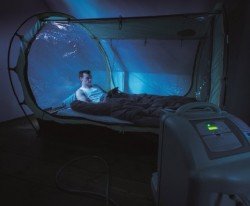
Altitude sickness is often the biggest game breaker during holidays or expeditions in the mountains. Fortunately altitude sickness can usually be prevented by taking a number of simple precautions and / or acclimatizing at home to the altitude. We summarize these measures briefly in the overview below.
The average tractor can estimate and limit its risk itself. If previous trips have shown that you have received complaints despite taking measures, then you probably belong to the sensitive people group. The chance of having altitude sickness again during your next trip is therefore greater. You would then be wise to adhere more strictly to the measures described below. By consistently following the advice given, altitude sickness can almost always be prevented, or at least less serious. Above 5000 meters, the human body is usually no longer able to adapt properly and almost everyone gets more or less altitude sickness. With a longer stay (of weeks) above that height, your physical and mental condition will also gradually deteriorate, also known as High Altitude Deterioration (HAD). Weight loss, severe fatigue and inability to perform complex actions or to make responsible decisions often occur. The victim is usually not aware of the latter, so that dangerous situations can arise. In this situation the old saying goes: Prevention is better than cure!
Preventing altitude sickness and the most important preventive measures:
1. Sleeping in a high altitude tent. Since 2000, it has been technically possible to bring the mountains home by sleeping in a high altitude tent. By acclimatising to the altitude at home in this way, the risk of altitude sickness is very small.
2. Ensure that you can recognize the complaints that are associated with altitude sickness.
3. Avoid a rapid rise from sea level to sleeping heights above 2500 meters.
4. If possible, sleep 1 to 2 nights at an altitude of around 2500 meters before climbing further.
5. As far as sleeping height is concerned, once above 2500 meters preferably not more than 300 meters, and above 4000 meters not more than 150 meters per day. If you have risen more than 300 or 150 meters further, go to sleep if possible at a level lower than the height that you reached during the day.
6. Never climb further to a new sleeping height if you have symptoms that no longer respond to simple painkillers. Only go to sleep higher when you are free of complaints.
7. Always descend if your symptoms get worse during a rest or walking day at the same height.
8. Take a day of rest after rising every 1000 meters, or walk the same day for a day.
9. Always drink enough (alcohol-free) to prevent dehydration (an extra liter per 1000 meter rise) and do not smoke.
10. If you have heart and / or lung complaints or other diseases, you should consult with your doctor if it is wise to walk in the mountains.
Listen to the interview we gave to KX radio about altitude sickness.
Want to know more about preventing altitude sickness or how we can help with your expedition or vacation in the mountains? Contact us down
